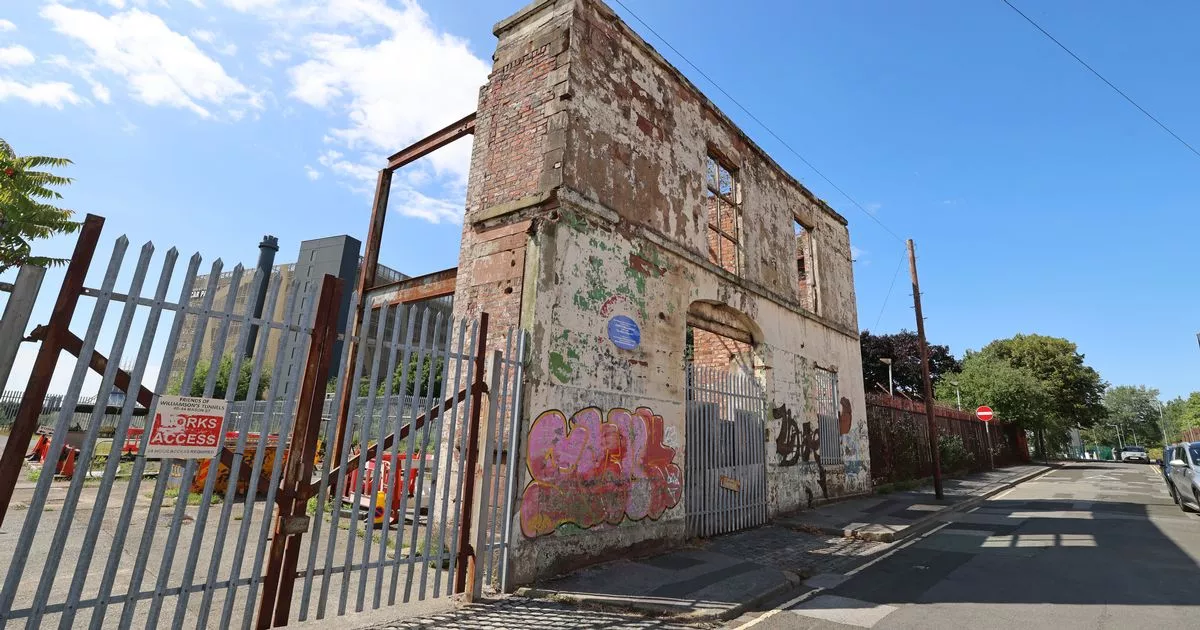It boasts a fascinating history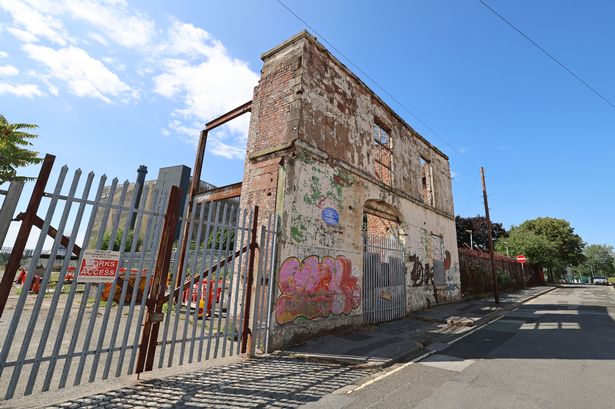 The former home of Joseph Williamson in Edge Hill
The former home of Joseph Williamson in Edge Hill
What remains of an historic Liverpool building once home to a wealthy businessman nicknamed “the mole” is still driven past everyday in the city centuries on. Dating back to the early 1800s, many will be familiar with the famous Williamson Tunnels, spanning from Mason Street to Grinfield Street, Smithdown Lane and Paddington.
Dating from 1810 to 1840, it was tobacco merchant Joseph Williamson who employed workers to create a fascinating maze of brick-arched underground tunnels and vaults – for seemingly no reason. Williamson lived on Mason Street and his work expanding the city’s already vast underground network earned him the nickname the “Mole of Edge Hill.”
The tunnels were gradually filled with rubble during the late 19th and early 20th centuries and remained largely inaccessible until archaeological investigations were carried out in 1995. Since then, groups such as the Friends of Williamson Tunnels and the Joseph Williamson Society have helped keep Williamson’s legacy alive.
READ MORE: Pillar-box red shops that after 100 years are still loved by localsREAD MORE: Lost high street shops Liverpool has said goodbye to
In recent years, steady progress has been made excavating the site. Nowadays, locals and tourists can book various tunnel tours to explore Liverpool’s underground world.
Born in 1769, it is widely believed Williamson’s birthplace was Warrington. Many have claimed the family moved to Liverpool when he was 11-years-old to seek employment.
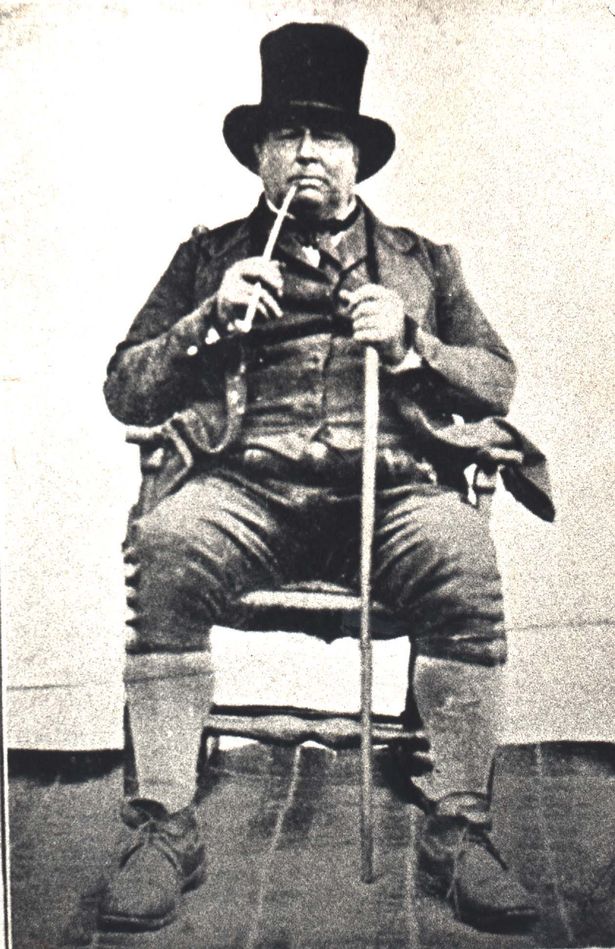 Joseph Williamson, who built Williamson’s Tunnels beneath Edge Hill
Joseph Williamson, who built Williamson’s Tunnels beneath Edge Hill
Finding a job with the tobacco and snuff firm of Richard Tate, in Parr Street, Williamson went on to marry his boss’s daughter, Elizabeth Tate and buy his in-law’s family business. In the early 1800s, Mr and Mrs Williamson moved to Mason Street in Edge Hill, where the now wealthy businessman built a fashionable house and the tunnels for which he became famous.
For years, Williamson employed men to burrow below Edge Hill creating a complicated network that stretched for miles. Through the years, many shared the theory that the tunnels were built to create employment for the large number of men returning to the city after the Napoleonic wars.
Many will know Williamson’s famous work earned him the nickname “mole of Edge Hill.” And back in 1997, it even inspired the name of one local pub.
READ MORE: Lost Merseyside nightclub loved for 99p drinks nights and foam partiesREAD MORE: Historic building tucked away down Liverpool city centre street restored
On June 27 that year, the ECHO reported how the pub was named after one of the city’s “best-known historical figures.” The article reads: “The new pub, on Wavertree Road, has been called the Mole of Edge Hill – the nickname of 19th century philanthropist Joseph Williamson.
“Williamson built an impressive labyrinth of tunnels beneath the Edge Hill area as a job creation scheme. This included a massive underground banqueting hall.
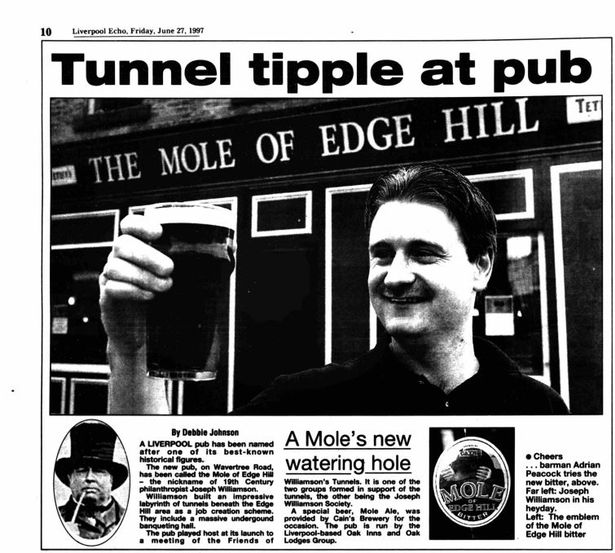 An article featured in the Liverpool ECHO in 1997 about a new pub named “The Mole of Edge Hill”(Image: Liverpool ECHO/British Newspaper Archive)
An article featured in the Liverpool ECHO in 1997 about a new pub named “The Mole of Edge Hill”(Image: Liverpool ECHO/British Newspaper Archive)
“The pub played host at its launch to a meeting of the Friends of Williamson’s Tunnels. It is one of two groups former in support of the tunnels, the other being the Joseph Williamson Society.”
A special beer, named Mole Ale, was also provided by Cain’s Brewery for the occasion. The article also featured a photo of barman Adrian Peacock outside trying the new bitter.
Through the decades, more has been discovered about the life and legacy of Williamson. Back in 2005, archaeologists uncovered the lost grave of the philanthropist for just a few hours, before burying the tomb once more.
READ MORE: Surprise nightclub hidden behind doors of Liverpool restaurantREAD MORE: Famous city centre pub could have been lost forever
At the time, local historians from the Friends of the Williamson Tunnels had been searching for the exact location of the grave for the last a decade and said the find came at the 11th hour. It was the third time archaeologists had searched for the grave of the “Mole of Edge Hill” and it was the final attempt to excavate the site, in a car park opposite police headquarters at Canning Place, part of what became the new Paradise Street development.
On October 24, 2005, the Liverpool Daily Post reported: “Members of the Friends of Williamson Tunnels said they were losing hope that the grave would be found on time.
“Trustee Bill Douglas said: “The dig was due to finish at 5pm so this was the last chance to find it. We broke through just after midday. When the archaeologist saw the name, we all cheered.”
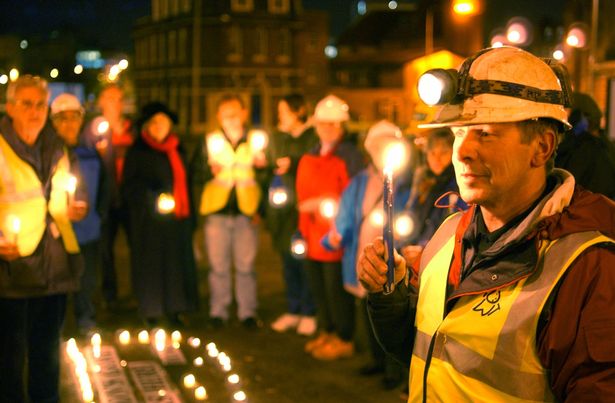 Candlelit vigil at the grave of Joseph Williamson by members of the Friends of Williamsons Tunnels years ago(Image: TRINITY MIRROR COPYRIGHT/REACH CONTENT ARCHIVE)
Candlelit vigil at the grave of Joseph Williamson by members of the Friends of Williamsons Tunnels years ago(Image: TRINITY MIRROR COPYRIGHT/REACH CONTENT ARCHIVE)
The group knew Williamson was buried in the former churchyard of St Thomas’s church – which was demolished and turned into a car park – but the precise location was unclear. Archaeologist Jamie Quartermaine, from Oxford Archaeology North, at the time said: “From a social history point of view, Williamson is of incredible importance and to find his grave is something most Liverpudlians can identify with.
“He’s one of the city’s eccentric personalities and we have been working on trying to find the grave for a number of weekends. We were struggling to find it so today has been very satisfying.” Today, the work of both the Friends of Williamson’s Tunnels and the Joseph Williamson Society continues.
The Williamson Tunnels heritage centre is dedicated to preserving the legacy of one of Liverpool’s most fascinating historical mysteries On Mason Street, parts of the structure of Williamson’s home remains and people drive past it everyday and on one wall, you can also spot an unofficial blue plaque.
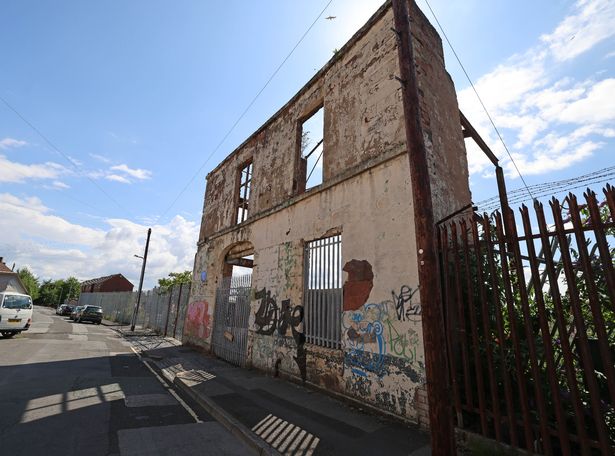 The former home of Joseph Williamson in Edge Hill
The former home of Joseph Williamson in Edge Hill
Back in January 2020, the Friends of Williamson’s Tunnels said it is not one of the official English Heritage Plaques and that they had no idea where it came from. On their website, they shared: “The mystery is, we have no idea who created or even fitted the plaque.
“The plaque appeared sometime during the Christmas and New Year break. Of course, we are delighted to see it in place and would love to know who put it there, we send our thanks to that anonymous, mystery person.”
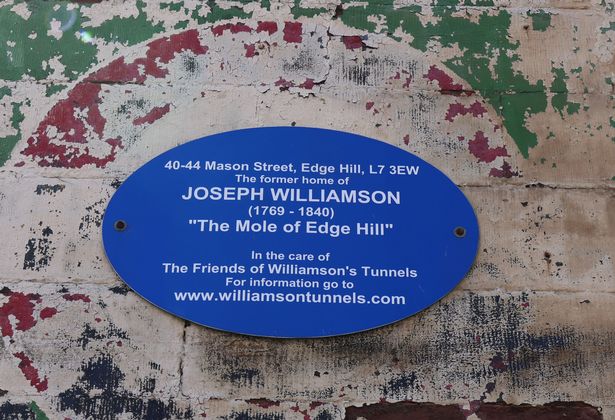 The blue plaque at the former home of Joseph Williamson in Edge Hill
The blue plaque at the former home of Joseph Williamson in Edge Hill
The plaque reads: “40-44 Mason Street, Edge Hill, L7 3EW. The former home of Joseph Williamson (1769-1840) “The Mole of Edge Hill” in the care of The Friends of Williamson’s Tunnels.” The plaque also redirects readers to its website.
After years of work, in May this year the Joseph Williamson Society announced it could be forced to close due to financial difficulties and a £20k rent bill. Joseph Williamson Society manager Dave Bridson said at the time: “The Centre has been operating on a peppercorn-lease for 25 years but following the failed sale of the freehold, a firm of property receivers are now in control of the site.
“They have offered the Society a new lease but are proposing a commercial rent that is beyond the Society’s means to pay. They have also offered to sell us the freehold but the asking price (£275,000) is also way out of our reach.”
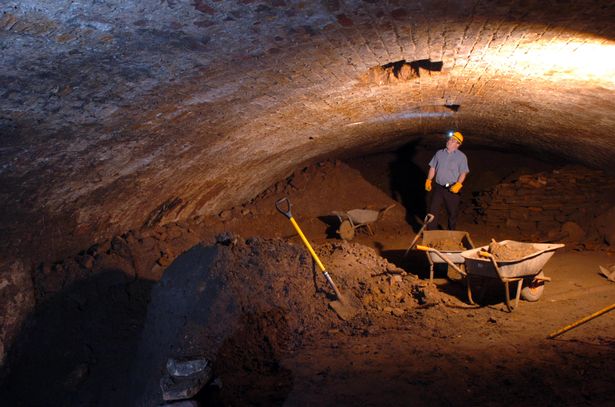 Dave Bridson, Williamson Tunnels Heritage Centre manager, at Edge Hill(Image: Martin Birchall / Trinity Mirror)
Dave Bridson, Williamson Tunnels Heritage Centre manager, at Edge Hill(Image: Martin Birchall / Trinity Mirror)
But last month, it was announced the heritage centre dedicated to the preservation of the mysterious Williamson Tunnels had been saved at the eleventh hour thanks to generous donors. The outpouring of donations means the heritage centre, on Smithdown Lane, will remain open to the interested public for at least another year.
Mr Bridson said: “From the Joseph Williamson Society, a huge thank you to everyone who has shown so much support for the Williamson Tunnels Heritage Centre. Your efforts have helped us raise the £20,000 we needed to cover the first year’s rent on the new lease we have been offered.
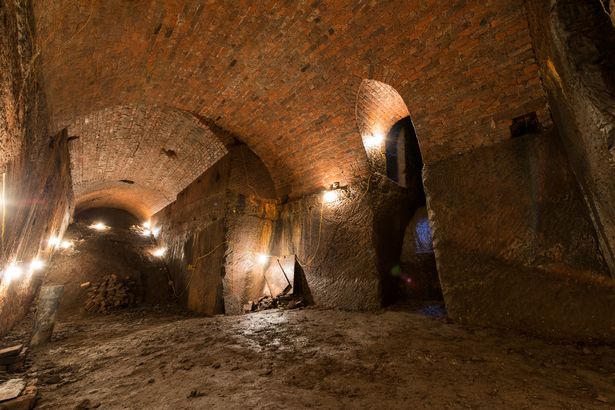 A view of the banqueting hall, underneath Joseph Williamson’s house in Mason Street, Edge Hill(Image: Chris Iles)
A view of the banqueting hall, underneath Joseph Williamson’s house in Mason Street, Edge Hill(Image: Chris Iles)
The legal stuff will take a while to sort out but in the meantime the Heritage Centre will be offering public tours of the tunnels as normal.” The short-term future of the heritage centre has now been secured thanks to the online fundraiser.
The Society now hopes to raise enough cash to purchase the site outright, securing its existence for years to come. Their work will continue to keep the fascinating story and legacy of Joseph Williamson alive.
